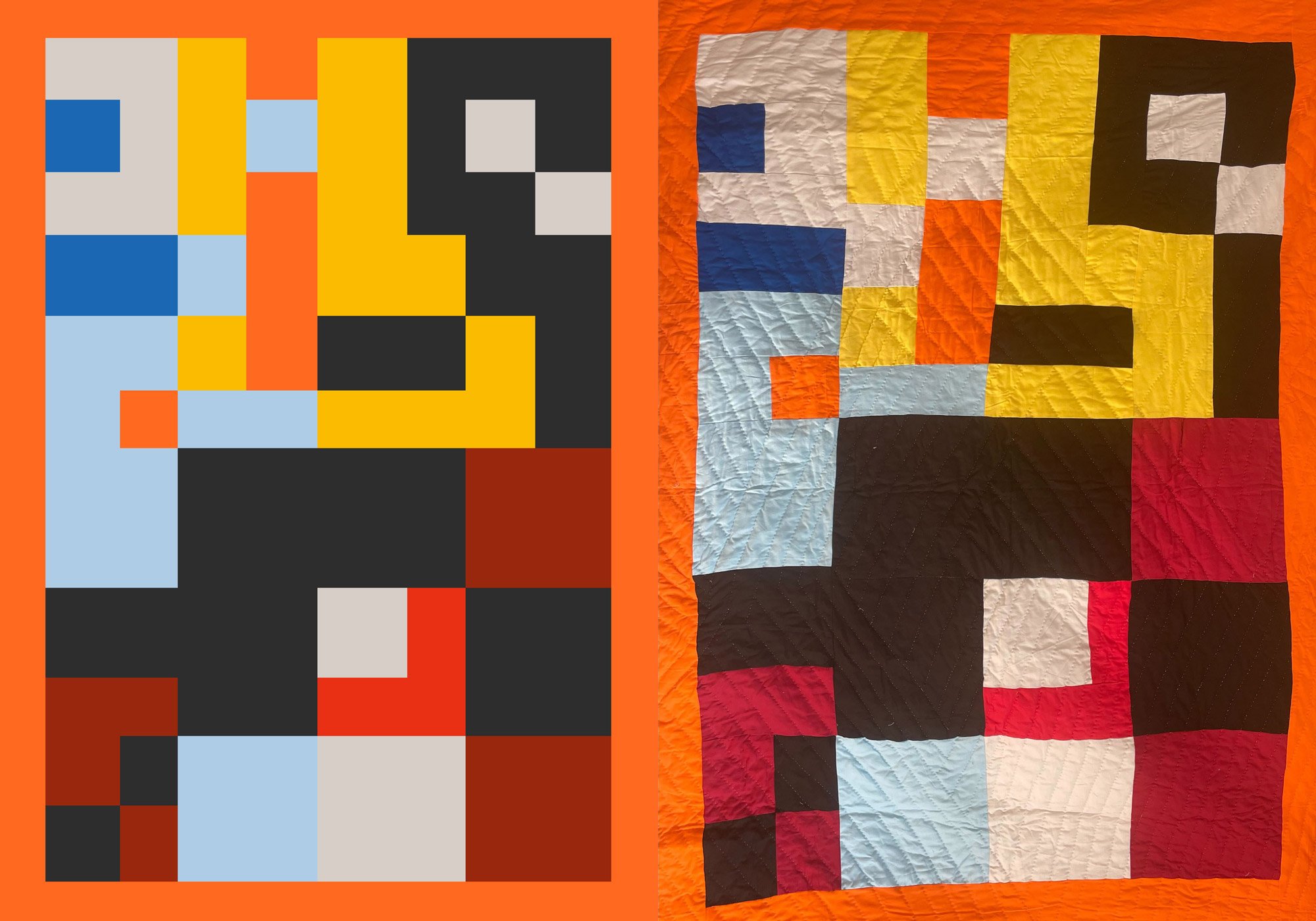
The quilters of Gee’s Bend, Alabama practice a brand of handcraft passed down through generations. Theirs is an art shaped by ancestry and intuition, not markets and institutions.
It’s for this reason that the community’s newest project is sure to draw some double takes. For Arsnl, Artists Rights Society’s (ARS) NFT platform, four Gee’s Bend quilters have collaborated with the generative artist Anna Lucia on a series of works that blend the digital and physical, the old-fashioned and the neoteric.
“Generations” is the name of their joint effort, which comprises 500 NFTs created from an algorithm Anna Lucia developed based on the quilters’ work, as well as the actual quilts that inspired the code. On offer, in other words, are the products of artists from wildly different backgrounds responding to each other’s creations—and finding a surprising amount of overlap in the process.
A generative NFT by Anna Lucia based on a quilt by Loretta Pettway. Courtesy of Arsnl.
That Anna Lucia would be interested in the Gee’s Bend quilters makes sense. The self-taught 31-year-old artist, who was born in the Netherlands and is now based in Cairo, Egypt, has made a habit of drawing thematic ties between computer code and textile art. Her last project, for instance, drew on the Bauhaus movement’s unheralded women designers for influence.
“When I first saw images from quilts from the Gee’s Bend, I was immediately captivated by… their vibrant colors, bold patterns, and expressive compositions,” Anna Lucia told Artnet News in an email. “I saw a connection to generative art in a completely different setting. Each quilt is unique, yet all share familiarity.”
“At first glance,” she continued, “the quilts may seem simple geometric compositions. But I found great complexity in the patterns when describing them in logic and code.”
For their part, the participating quilters—Loretta Pettway Bennett, Louisiana P. Bendolph, Essie Bendolph Pettway, and Mary Margaret Pettway—brought an entirely different perspective to the project. All four are direct descendants of the enslaved people brought to the region in the early 1800s by the plantation owner Joseph Gee. (The quilts of Lucy T. Pettway, who passed away in 2004, also informed Lucia’s code.)
The women are in their 60s now and had knowledge of, but little interest in, NFTs, according to Katarina Feder, ARS’s Director of Business Development and a co-founder of Arsnl. But it wasn’t long into a Zoom meeting earlier this year that the four quilters found common ground with the generative artist.
A quilt by Mary Margeret Pettway inspired by an NFT by Anna Lucia. Courtesy of Arsnl.
“What I found remarkable, being a fly on the wall for [those discussions], was just how similar they can become when they’re speaking the language of creators,” said Feder. “There’s a real symbiosis.”
Indeed, flit your eyes between a Gee’s Bend quilt and its digital counterpart and you’ll see both exude a command of color and pattern, despite the processes that went into their making.
Each of Anna Lucia’s NFTs is an output from the same algorithm. The examples for sale were chosen by the quilters themselves.
“It was fascinating to see the final choices,” Anna Lucia said. “Sometimes, they were just like what I would have picked; other times they were completely different.” Embedded in the metadata of each NFT is information about who chose that particular design and which artist’s work it was based on.
A generative NFT by Anna Lucia based on a quilt by Lucy T. Pettway. Courtesy of Arsnl.
Set to launch May 17, the NFTs will be priced at .15 ETH each (currently around $300). Thirty percent of profits will go back to the quilters, with an additional five percent of each sale earmarked for Alabama’s Freedom Quilting Bee Cooperative. Anna Lucia and Arsnl will each take 25 percent, while the remaining proceeds will be split between Refraction and Seed Club, two DAOs that helped organized the project.
Also for sale are six Gee’s Bend quilts, which are priced between $8,000 and $20,000. (The quilters will receive up to 80 percent of these sales.
Greg Liburd, one of Refraction’s co-founders, framed the scope of the project nicely in his curatorial statement: “’Generations,’” he wrote, “is an expression of the “heritage algorithms” so alive in Gee’s Bend’s hand-stitched masterworks, remixed artistically through digital code.”